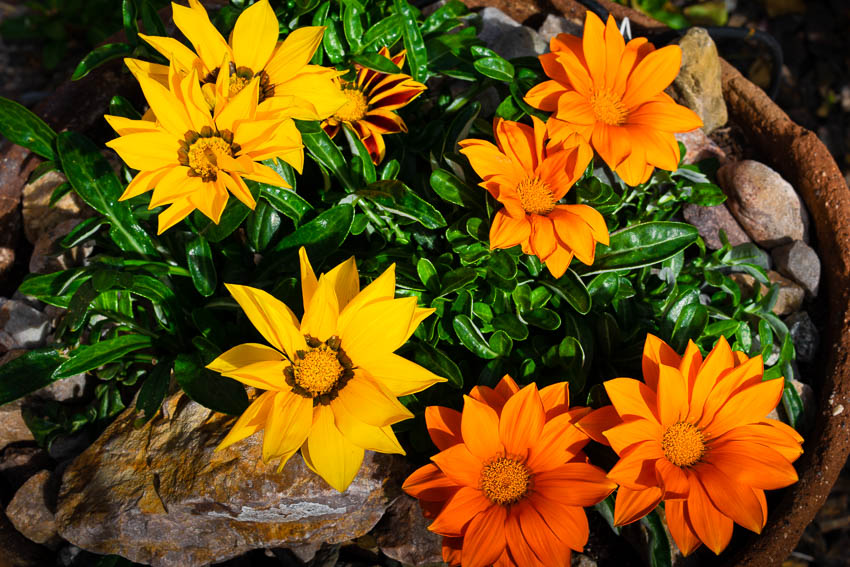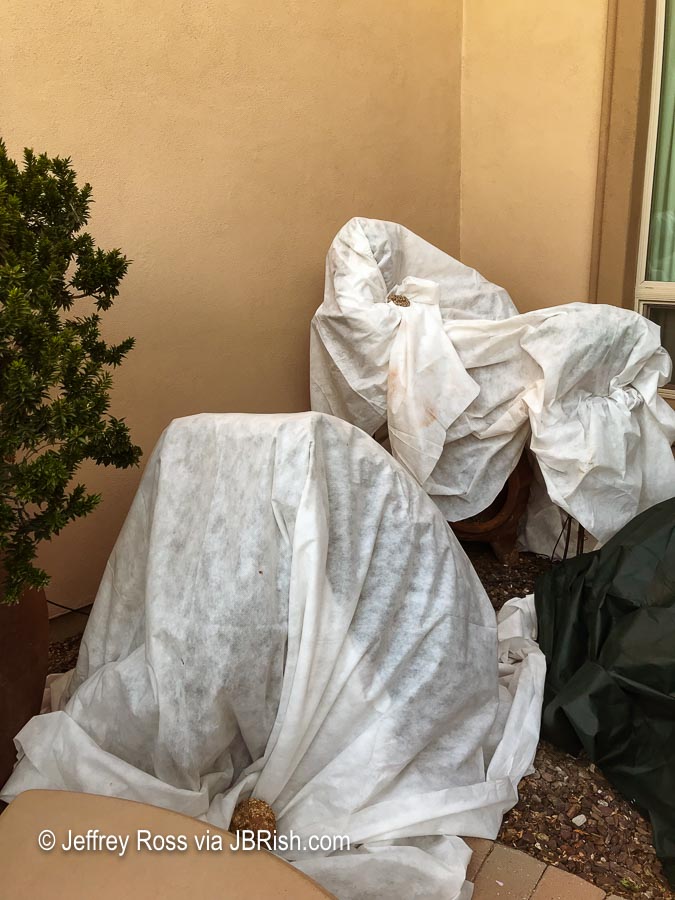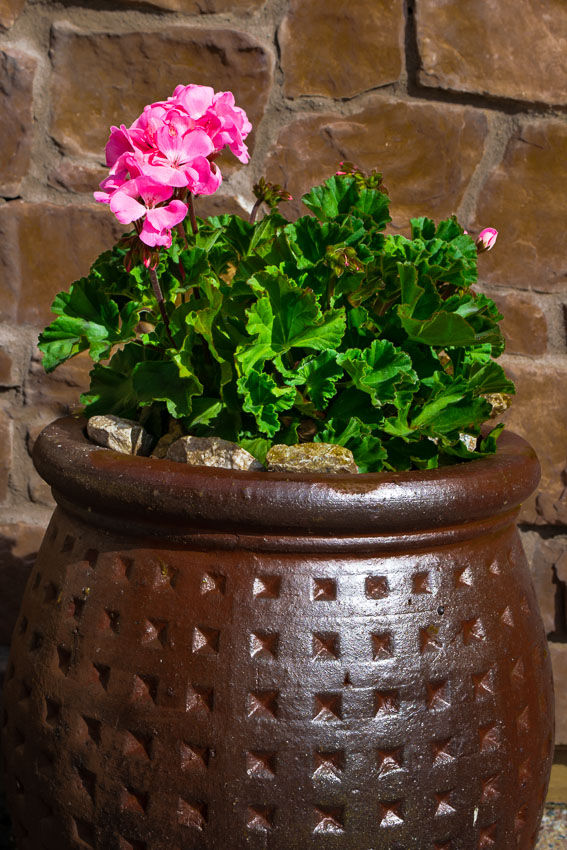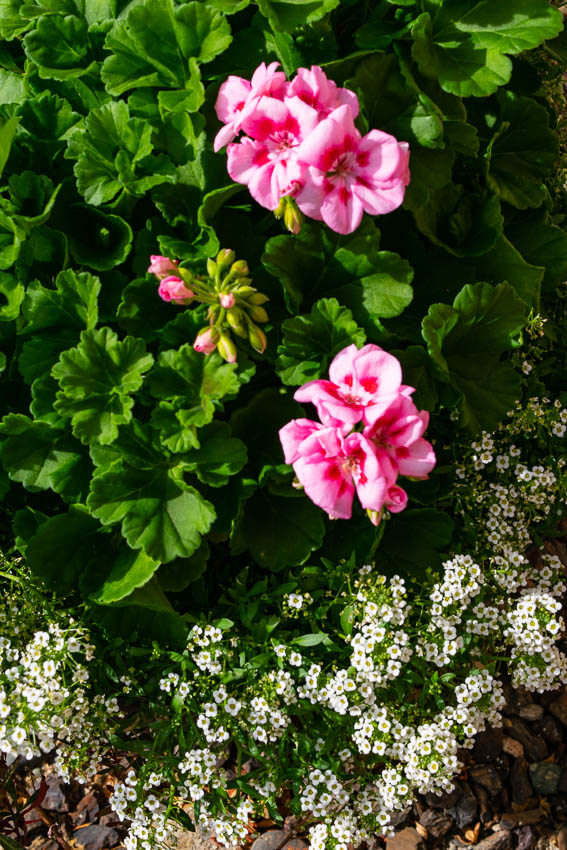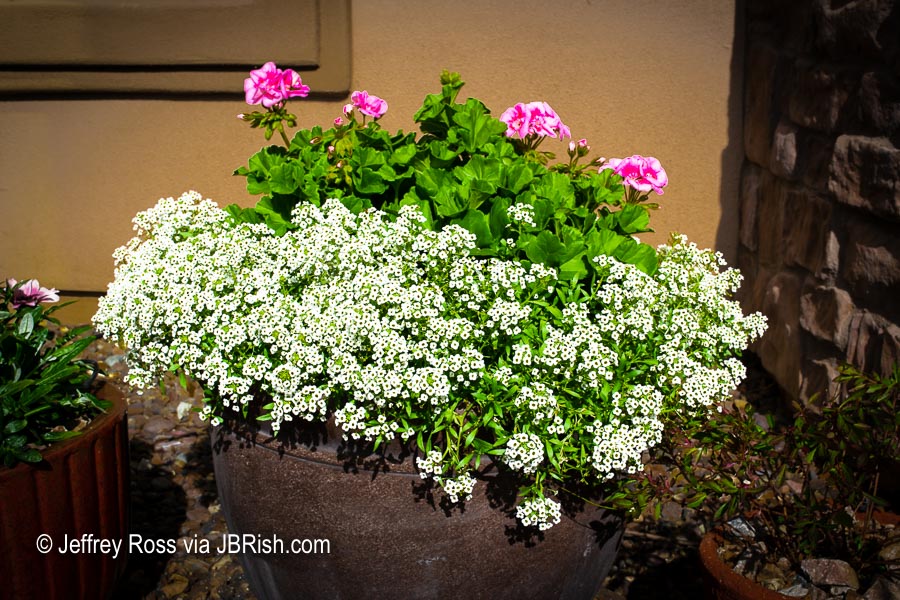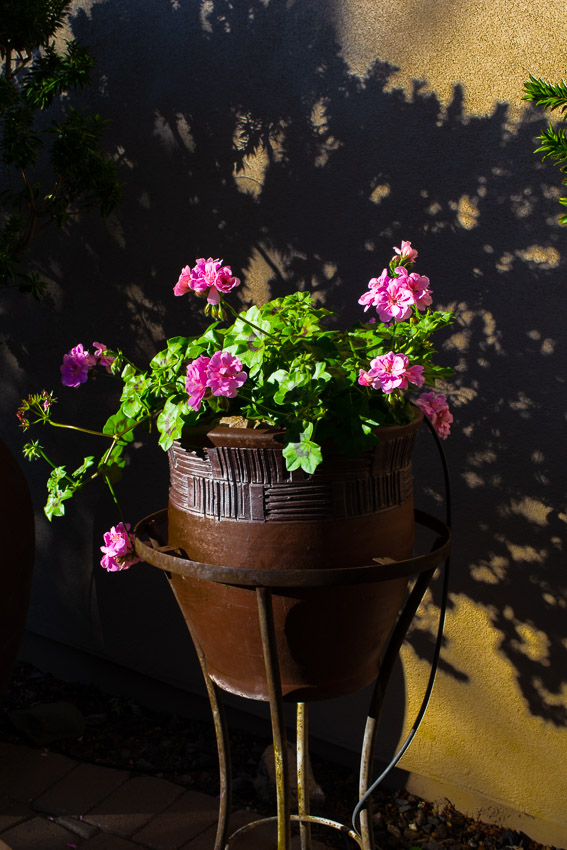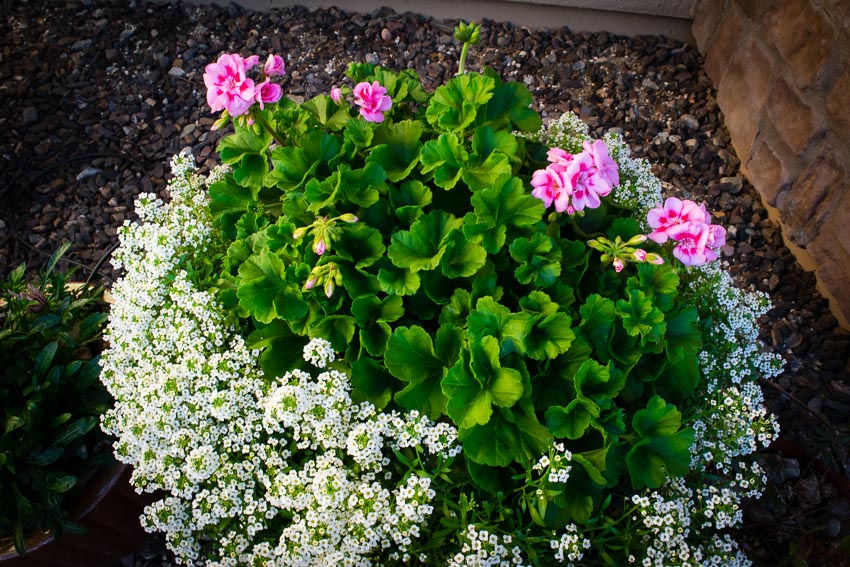Living in the Valley of the Sun when temperatures in April can reach 100 degrees and by May 100 seems as though it is a daily occurence, gardening still goes on. To deal with the unusual heat and direct brutal sun, however, certain accommodations must be made.
Because of the unusual emergency situation in the US this year, we were late in getting to some of our planting. One family of plants that is reliable even in the heat and sun of Phoenix, AZ are gazanias.
While gazanias can be grown everywhere, they do very well in hot weather. After all, they are native to South Africa. In areas that receive cold weather, these would be annuals. In the desert, they can be weathered over, but to be honest, they get bedraggled after one year and need much pruning and tender care to keep them going.
We find it more beneficial to introduce new plants each year.
I have written about them HERE and HERE
When planting even these hardy sun-loving plants, the gardener can’t just place them in their pot or garden space with appropriate fertilizer and water and anticipate that they are going to adjust and adapt easily.
What we have found that works well, is to provide a covering or some shade for two or three days and then remove the covering towards the evening of the last covered day when sun is no longer on them so they are prepared for the next day.
Here is what it looks like in our garden when we plant during the heat of the season!
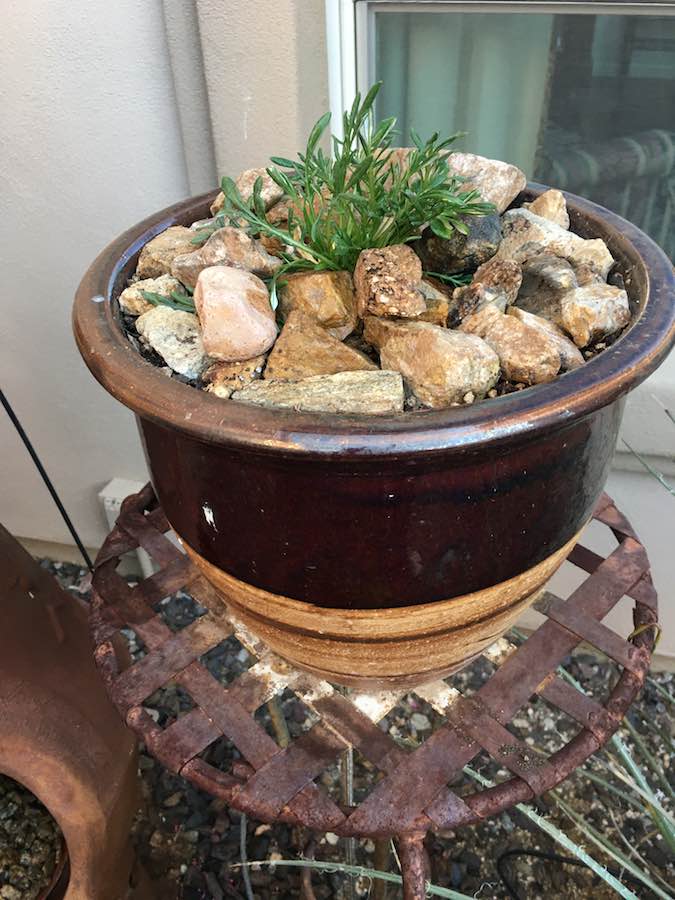
The picture above is of a newly planted gazania. We use rock mulch to hold the emitters in place and help keep the lower layers of soil damp.
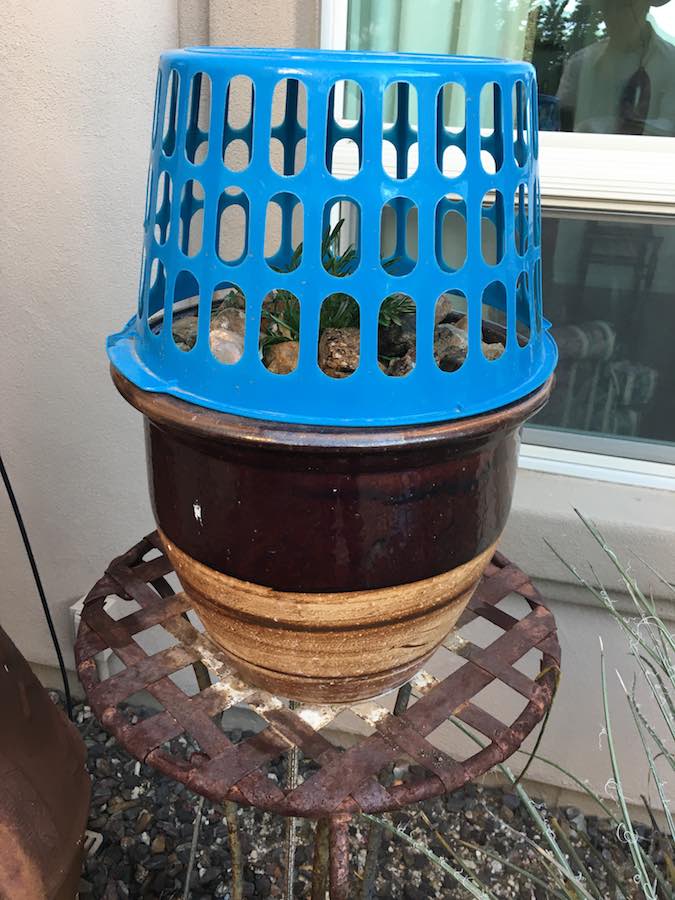
This is the same plant with its “hat” on. Notice that there is some light that gets to the plant, but not extreme sun. These simple baskets can be found at stores that sell things for a dollar (+/-). Of course there are more expensive coverings as well. We have a plastic milk crate we sometimes call into action for larger planters.
NOTE: If wind is going to be an issue, place a rock or other weight on top, making sure the covering is not crushing the plant.
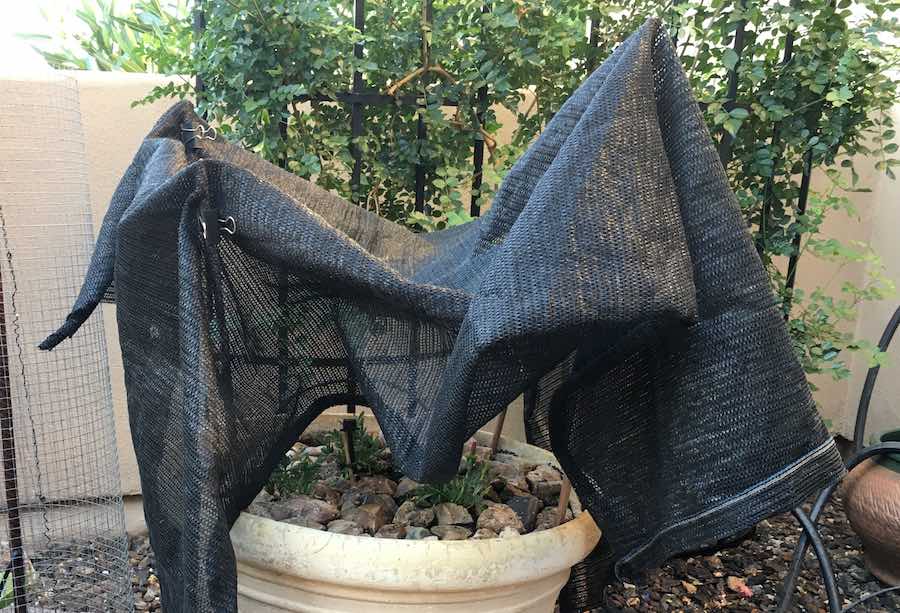
We also use shade cloth when necessary because it is the only available covering at the time or the pot is large. We hold the covering above the plant by inserting bamboo garden stakes and using medium stationery clips to affix the cloth to the stakes; strong twist ties would do as well.
Gazanias are striking plants with exquisite color variations. They are very forgiving and I recommend them. The flower to leaf ratio is generous so there is much color in the area when they are cultivated.
Read more about gazanias.
How To Grow Gazania Treasure Flowers: Care Of Gazania Flowers
**********
All original content on this blog is copyrighted by Jeffrey B. Ross with ALL Rights Reserved. While reference links back to JBRish.com are appreciated and encouraged, please acquire approval for any reproduction of original content from this website.
©Jeffrey B. Ross 2014 – 2020 – JBRish.com
